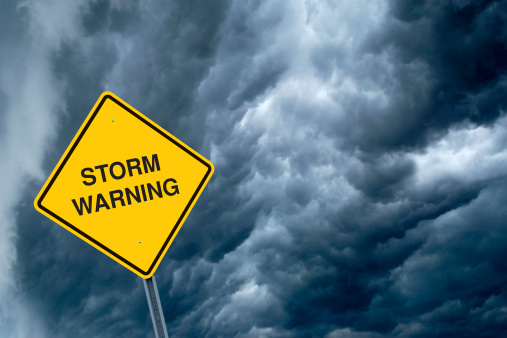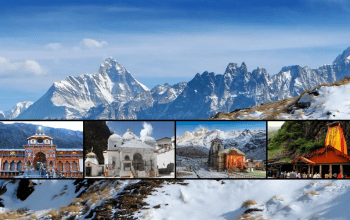One of the most devastating Public Storm Warning #1 Signal in the history of the United States hit on August 23, 2005 when Hurricane Katrina made landfall on the southern coast of Louisiana and Mississippi. The hurricane was formed off the coast of Cuba on August 18th where it strengthened from a tropical depression to Category 1 Hurricane in just under 48 hours. In its short life, this storm gathered strength quickly, and soon made its way across the Gulf of Mexico towards New Orleans, killing at least 1,464 people in its wake, leaving tens of thousands homeless and causing billions of dollars in damage to infrastructure and private property.
What is Public Storm Warning #1 Signal?
The Public Storm Warning #1 Signal is made up of a series of sirens and lighted signs on poles. A signal means one of three things depending on where you are located: shelter, go indoors, or seek more information. You should be aware that there will be times when you may not hear any sounds or see any flashing lights because they may be damaged, need to be tested, or aren’t functioning properly.
However, if an emergency alert has been issued and it’s not in your area but close by, take precautions. For example, if Public Storm Warning #1 Signal has been issued in your area but public storm warning #3 has been issued in a nearby town then it’s time to head for safety.
Tropical cyclone warning signal
A Public Storm Warning #1 Signal the danger of a tropical cyclone, usually meaning that a tropical cyclone is predicted to produce gale force winds or greater on at least one island. A storm warning is issued based on whether or not its center is expected to be within 100 nautical miles (185 kilometers) of an island. If it is, a Public Storm Warning #1 Signal will be issued for that island. If there are no islands in that area, then the entire country will be under a public storm warning number 1 signal. It is possible for two different warnings to exist simultaneously, and if this occurs, you can check which applies by looking at the location code.
DAMAGE TO STRUCTURE:
The National Weather Service advises that roofs of homes may be lifted off and have some exterior walls fail. Windows may shatter. Mobile homes will be damaged, causing pieces to fly out. The winds can knock down trees and power lines. If you are in a high-rise building with windows near he storm’s path, protect yourself by moving away from any glass door or window. Stay indoors until an all clear is given.
Public Storm Warning #1 Signal has passed, stay inside for at least 24 hours so you don’t expose yourself to flying debris outside (debris such as tree branches, leaves, rain). Stay tuned for information on Public Storm Warning #2 Signal.
DAMAGE TO VEGETATION:
Blocking a sun’s rays prevents tree leaves from properly synthesizing sugar, preventing their chlorophyll from doing its job in harvesting sunlight and converting it to usable food for trees. This prevents new photosynthesis which may lead to negative growth or even death for plants without sustenance. Trees that have grown large enough can withstand one full year of defoliation, but many will die after prolonged exposure to chronic stressors such as droughts, insect infestations and long periods of darkness.
DAMAGE TO STRUCTURE:
If you find yourself in a hurricane, remember to check for structural damage after the Public Storm Warning #1 Signal. Take care when entering damaged buildings and avoid floodwaters as best as possible. Seek shelter at a high elevation if you live in a low-lying area. Stay indoors and turn off lights during the storm unless instructed otherwise by authorities to signal your location. Check on neighbors who might need assistance. Beware of downed power lines and stay away from them at all costs. Keep safe until the all clear is given.
DAMAGE TO VEGETATION:
Debris will have to be cleared from storm-damaged trees, branches and leaves that create tripping hazards for passersby. Street sweepers will have to spend time cleaning up sidewalks and other areas that accumulate large piles of vegetative debris. Fallen trees or branches will also have to be removed from rights-of-way. Trees along major highways may need to be removed or at least trimmed back so that overhanging limbs are less likely to drop into the roadway during a windstorm.
Sidewalks should be inspected for damage before being used again as people walking on broken pavement could become injured if they slip and fall. Finally, fallen power lines can create electrocution risks so these should be reported immediately to reduce safety hazards.
What to do during Public Storm Warning #1 Signal?
You should never ignore a Public Storm Warning #1 Signal. At this point, there is little to do but stay inside and stay informed by local radio stations. Shut all doors and windows in your home, turn off all heaters or air conditioners to prevent fire, and make sure your gas fireplace has an electric pilot light so you don’t expose yourself to any toxic fumes. If you’re cooking or using your oven during this time, use a stovetop range or a microwave instead of natural gas appliances. Do not go outside unless absolutely necessary,
if you must go outside, wear clothing appropriate for severe weather conditions and keep away from power lines. Listen to the latest updates on your favorite radio station, TV channel, or government website to stay informed about what’s happening with the storm.
Final Words
Public Storm Warning #1 Signal is a reminder that it’s important to pay attention to your local forecast. It’s not just wind and rain, but the power of Mother Nature that can unleash devastation on your city and surrounding areas if you’re not careful. Remembering this week’s events should be a timely warning to everyone in Houston, Texas and across the southeast United States as well. Please remain vigilant as there are many weather hazards yet to come this storm season.



